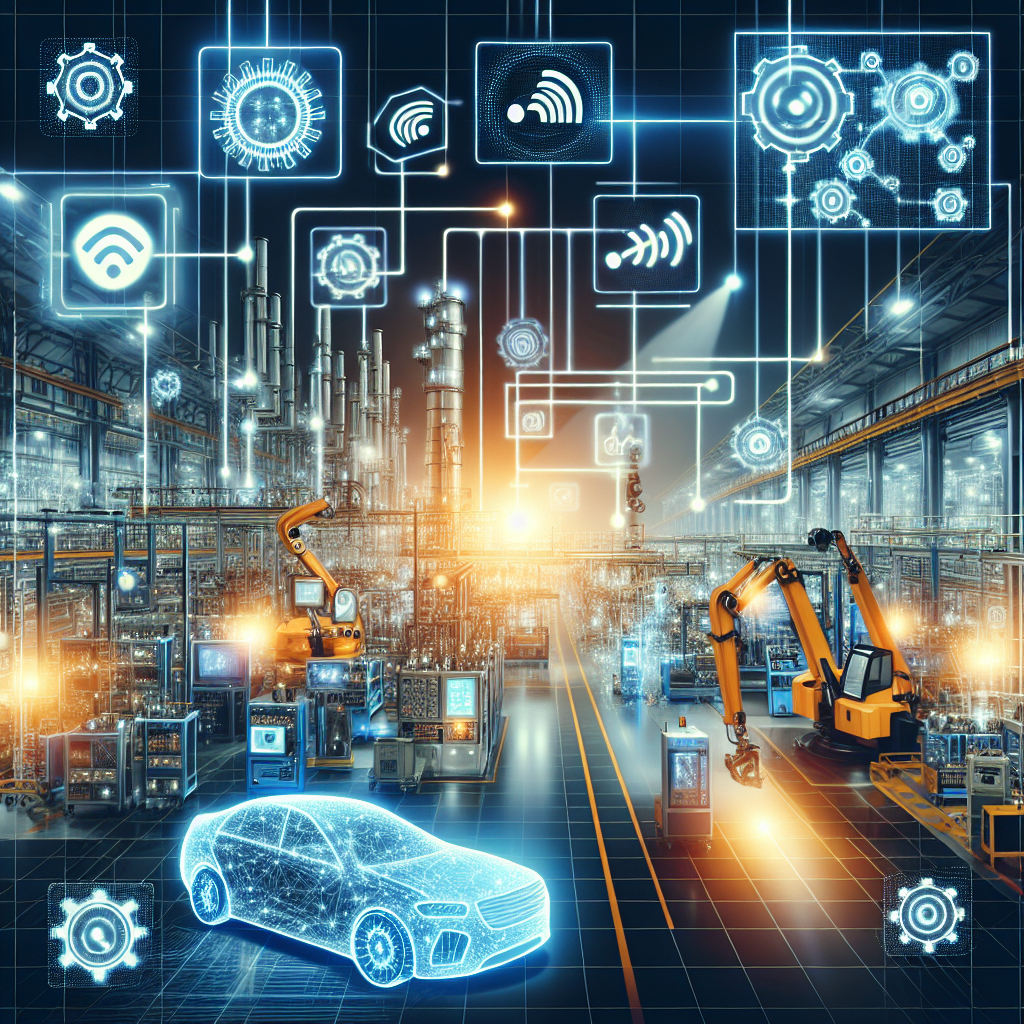In recent years, the manufacturing industry has seen a significant shift towards the integration of artificial intelligence (AI) and smart sensors into their operations. This trend has been driven by the need for increased efficiency, productivity, and cost-effectiveness in manufacturing processes. AI and smart sensors have the potential to revolutionize the way products are manufactured, making processes more streamlined and less error-prone.
AI in manufacturing refers to the use of machine learning algorithms and other forms of artificial intelligence to optimize production processes. By analyzing large amounts of data in real-time, AI can identify patterns and trends that can help improve efficiency and reduce waste. For example, AI can be used to predict equipment failures before they happen, allowing for preventive maintenance to be carried out. This can help reduce downtime and increase overall equipment effectiveness.
Smart sensors, on the other hand, are physical devices that are used to monitor and collect data in real-time. These sensors can be embedded in machinery, equipment, or even products themselves to provide valuable information about the manufacturing process. Smart sensors can measure temperature, pressure, humidity, and other variables to ensure that processes are running smoothly and efficiently. By combining AI with smart sensors, manufacturers can gain valuable insights into their operations and make informed decisions to improve productivity.
One of the key benefits of using AI and smart sensors in manufacturing is the ability to create a more connected and intelligent factory. By collecting and analyzing data from various sensors and machines, manufacturers can gain a better understanding of their processes and identify areas for improvement. This can lead to better decision-making, increased efficiency, and ultimately, higher profits. Additionally, AI and smart sensors can help manufacturers adapt to changing market conditions and customer demands more quickly, allowing for greater flexibility and agility in production.
Another advantage of using AI and smart sensors in manufacturing is the potential for predictive maintenance. By analyzing data from sensors and machines, AI algorithms can predict when equipment is likely to fail and alert maintenance teams to take preventive action. This can help reduce downtime, extend the lifespan of equipment, and ultimately save on maintenance costs. Predictive maintenance can also help manufacturers schedule maintenance activities more efficiently, reducing the likelihood of unexpected breakdowns and disruptions to production.
In addition to predictive maintenance, AI and smart sensors can also be used to optimize production processes. By analyzing data in real-time, AI algorithms can identify bottlenecks, inefficiencies, and other issues that may be hindering production. This information can be used to make adjustments to the manufacturing process, such as changing production schedules, adjusting machine settings, or reallocating resources, to improve overall efficiency. By continuously monitoring and analyzing data, manufacturers can ensure that their processes are running at peak performance and make adjustments as needed to meet production targets.
Overall, the integration of AI and smart sensors in manufacturing offers numerous benefits for manufacturers looking to improve efficiency, reduce costs, and stay competitive in today’s fast-paced market. By leveraging the power of artificial intelligence and real-time data collection, manufacturers can gain valuable insights into their operations and make informed decisions to drive continuous improvement.
FAQs:
1. How do AI and smart sensors work together in manufacturing?
AI and smart sensors work together by collecting data from various sensors and machines in a manufacturing facility. This data is then analyzed by AI algorithms to identify patterns, trends, and anomalies that can help improve efficiency and productivity. By combining the capabilities of AI and smart sensors, manufacturers can gain valuable insights into their operations and make informed decisions to optimize production processes.
2. What are some examples of AI and smart sensors in manufacturing?
Some examples of AI and smart sensors in manufacturing include predictive maintenance systems that use AI algorithms to predict equipment failures, real-time monitoring systems that use smart sensors to collect data on production processes, and quality control systems that use AI to identify defects in products. These technologies can help manufacturers improve efficiency, reduce waste, and increase productivity.
3. How can AI and smart sensors help manufacturers reduce costs?
AI and smart sensors can help manufacturers reduce costs by improving efficiency, optimizing production processes, and reducing downtime. By analyzing data in real-time, AI algorithms can identify areas for improvement and help manufacturers make informed decisions to reduce waste and increase productivity. Additionally, predictive maintenance systems can help manufacturers avoid costly equipment failures and extend the lifespan of machinery, ultimately saving on maintenance costs.
4. What are the challenges of implementing AI and smart sensors in manufacturing?
Some of the challenges of implementing AI and smart sensors in manufacturing include the cost of investment, the complexity of integrating new technologies into existing systems, and the need for specialized skills and expertise to manage and analyze the data collected. Additionally, manufacturers may face resistance from employees who are hesitant to adopt new technologies or change existing processes. However, with proper planning and support, these challenges can be overcome, and manufacturers can reap the benefits of using AI and smart sensors in their operations.

